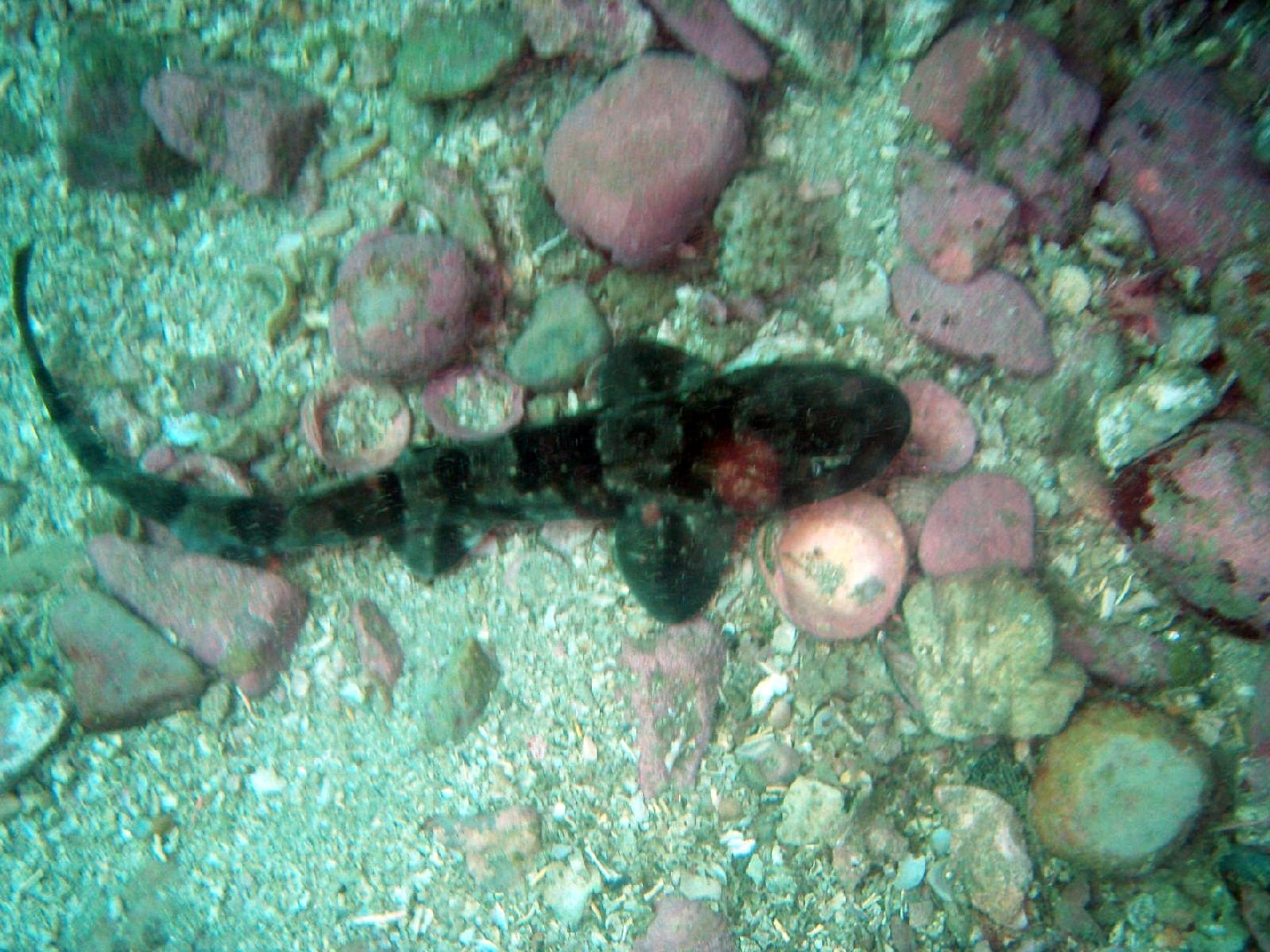Dark shyshark
A species of Shysharks, Also known as Shyshark Scientific name : Haploblepharus pictus Genus : Shysharks
Dark shyshark, A species of Shysharks
Also known as:
Shyshark
Botanical name: Haploblepharus pictus
Genus: Shysharks
Content
Description
 Photo By Anthony Patterson , used under CC-BY-2.0 /Cropped and compressed from original
Photo By Anthony Patterson , used under CC-BY-2.0 /Cropped and compressed from original Description
Reaching no more than 60 cm (24 in) long, the dark shyshark differs from other shysharks in that it is slender-bodied when juvenile and stocky-bodied when adult. Its head is short, wide, and flattened, with a bluntly rounded snout and very large nostrils. The anterior rims of the nostrils bear greatly enlarged lobes of skin, which are fused into a single flap that reaches the mouth; the flap conceals the nasal excurrent openings and a pair of grooves that run between them and the mouth. The large, horizontally oval eyes are equipped with rudimentary nictitating membranes (protective third eyelids), and have strong ridges beneath. The mouth is short but wide and bears furrows at the corners extending onto both jaws. There are 45–83 upper and 47–75 lower tooth rows; each tooth has a long central cusp flanked by a pair of smaller cusplets. The five pairs of gill slits are located fairly high on the body. The two dorsal fins are of nearly equal size and placed far back on the body, with the first originating over the latter third of the pelvic fin bases and the second over the latter half of the anal fin base. The pectoral and pelvic fins are broad and rounded; the males have stout claspers. The pelvic and anal fins are about as large as the dorsal fins. The broad caudal fin comprises about a fifth of the total body length and has a strong notch near the tip of the upper lobe and an indistinct lower lobe. The skin is thick and covered by well-calcified arrowhead-shaped dermal denticles. The coloration of the dark shyshark is highly variable, and particular individuals can resemble any of the other shyshark species. The background color ranges from light brown to reddish to grayish to almost black above, transitioning abruptly to white or cream below, sometimes with dark blotches beneath the paired fins. There may be 6–8 orange, brown, or blackish variably shaped saddles along the back and tail, edged more or less obviously in black. There may also be white spots within or within and between the saddles.
* Disclaimer: The judgment on toxicity and danger is for reference only. We DO NOT GUARANTEE any accuracy of such judgment. Therefore, you SHALL NOT rely on such judgment. It is IMPORTANT TO SEEK PROFESSIONAL ADVICE in advance when necessary.
Scientific Classification
Phylum
Chordates Class
Sharks and rays Order
Ground sharks Family
Catsharks Genus
Shysharks Species
Dark shyshark